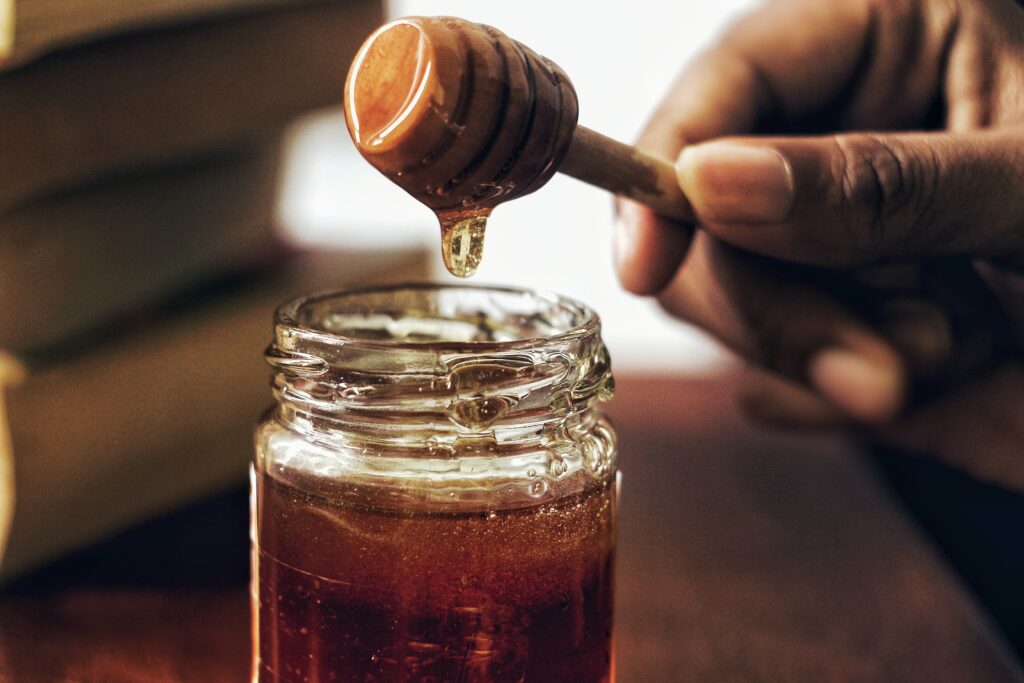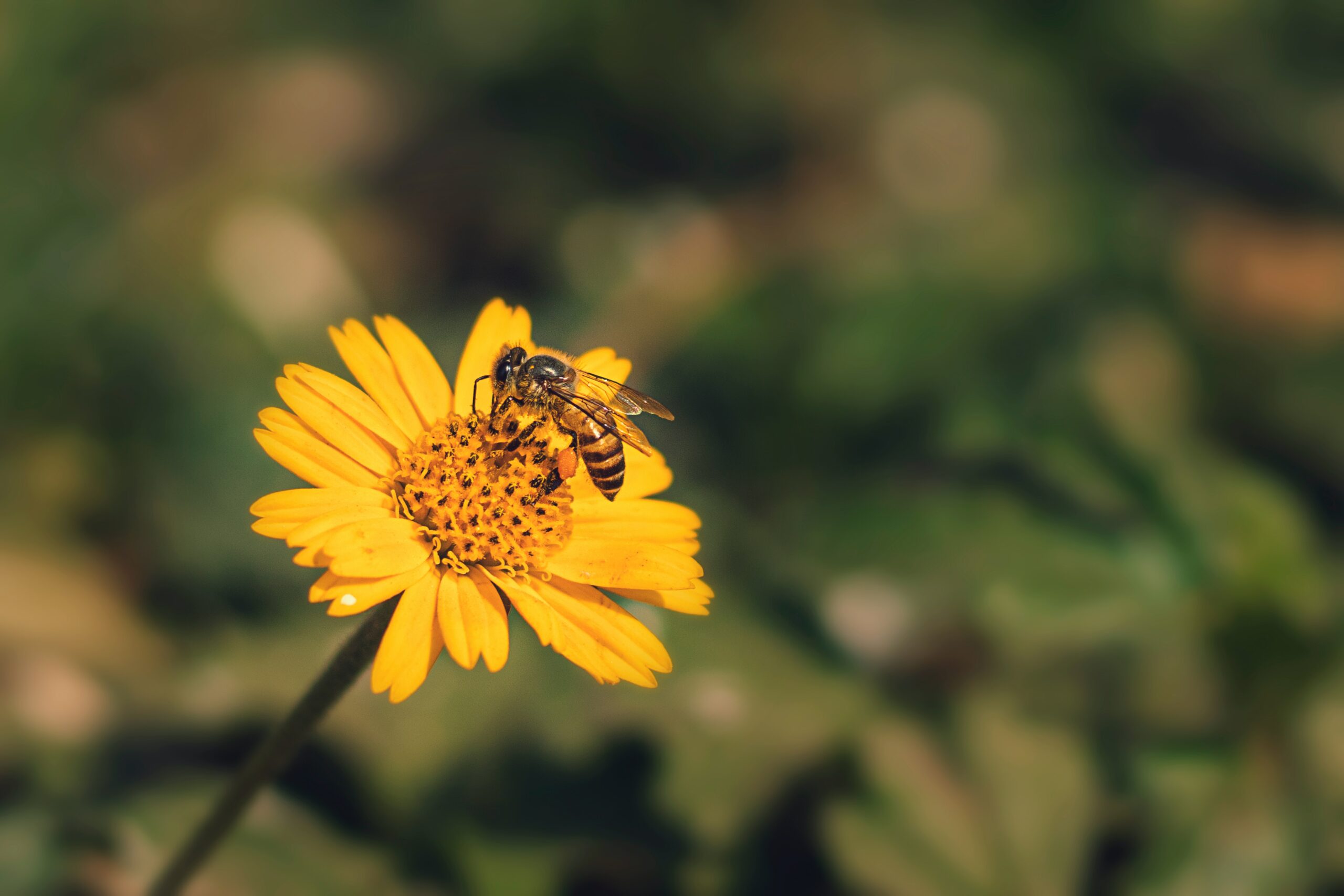Date of the last update: 18.07.2024
Apitherapy, also known as the medicinal use of bee products, is a medical practice based on the use of natural ingredients produced by bees. This ancient form of therapy has a long history of use across cultures and is playing an increasingly important role in natural medicine.
The history of apitherapy dates back millennia and is present in various cultures around the world. The first traces of the use of bee products for medical purposes can be found in ancient Egypt, where honey, propolis and royal jelly were used as remedies for various ailments.
Table of contents:
- How does apitherapy work?
- How much does apitherapy cost?
- Can you mix honeys together?
- Are there contraindications to apitherapy?
- Summary
You can read this article in 4 minutes.
How does apitherapy work?
Apitherapy is used to treat various conditions and ailments. For example:
- Treating Infections – bee products such as honey and propolis have antibacterial, antifungal and antiviral properties. They can help soothe skin, throat, respiratory and urinary tract infections.
- Treating Inflammation – propolis and bee venom have strong anti-inflammatory properties. They can help soothe inflammation of the joints, skin, mucous membranes and digestive system.
- Supporting the health of the immune system – bee products such as pollen and royal jelly contain ingredients that can strengthen the immune system, increase the body’s resistance and help fight infections.
- Pain management – bee venom has analgesic and anti-inflammatory properties, which can help relieve joint pain, muscle pain, neuralgia, and migraines.
- Improving skin health – bee products such as royal jelly and beeswax can be used for skin care, soothing irritation, regenerating tissues and improving the appearance of the skin.
- Support for the digestive system – honey and propolis have a beneficial effect on the health of the digestive system. They can help soothe gastritis, stomach ulcers, digestive problems, and intestinal infections.
- Treating allergies – pollen can be used to relieve allergy symptoms such as hay fever and skin reactions.
How much does apitherapy cost?
The cost of apitherapy can vary depending on many factors, including location, experience of the therapist, type of therapy used, and the scope and duration of sessions. Since apitherapy can include different methods and bee products, such as honey, propolis or bee venom, prices can vary.
The cost of apitherapy, which includes treatments such as bee venom therapy, can vary significantly depending on the location and the specifics of the treatment. In the UK, a typical session of bee venom therapy can range from £30 to £60 per session. However, for more extensive treatments, the costs can increase, potentially reaching several hundred pounds for a complete treatment plan.
In the United States, the price range is somewhat similar but can vary more widely based on the practitioner’s expertise and the region. Individual sessions can range from $50 to $100 or more, with comprehensive treatment plans potentially costing several hundred to over a thousand dollars depending on the frequency and duration of the therapy.
Check out also: Hortitherapy – What Is It and How to Become a Hortitherapist
Can you mix honeys together?

In the context of apitherapy, different types of honey and bee products can be used in therapies. Blending honeys can be practiced for a combination of different nutrients and health benefits. For example, you can combine manuka honey, which is known for its antibacterial properties, with acacia honey, which is rich in enzymes and anti-allergenic substances.
Mixing honey in apitherapy can lead to a synergistic effect, where the combination of different ingredients contributes to the strengthening and mutual intensification of their positive effect on the body. For example, combining honey with pollen can provide the body with not only valuable nutrients from honey, but also a wealth of vitamins, minerals and antioxidants from flower pollen.
It is important to remember that each type of honey and bee product has its own unique health benefits, and not all types of honey will work well together in the context of therapy. Therefore, it is always worth consulting an experienced apitherapist who can advise on the appropriate combinations of honey and bee products, taking into account individual needs and goals of therapy.
Are there contraindications to apitherapy?
Treatment with bee products is a procedure that may have contraindications to carry out. These include:
- allergy to bee venom or bee products (honey, pollen, propolis, etc.)
- cardiovascular and heart diseases,
- diseases of the nervous system,
- epilepsy,
- pregnancy, and also:
- needle diseases,
- skin diseases,
- autoimmune diseases.
It is always advisable to consult your doctor before starting therapy. An experienced specialist in the field of apitherapy, before starting the procedure, should assess the health condition and exclude the occurrence of complications or undesirable symptoms.
Explore more: Dog therapy – what is it? What dogs are used in dog therapy?
Summary
Apitherapy, as part of ecotherapy, provides a unique approach to healing and improving the quality of life. Bee products such as honey, propolis, pollen, bee venom and royal jelly have extraordinary health properties that are used in therapy.
In apitherapy, natural and nutrient-rich bee products are used to stimulate the body’s regenerative processes. They have a positive effect on physical and mental health.





